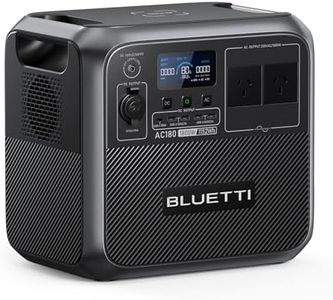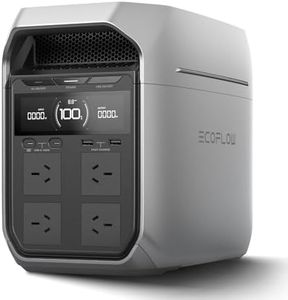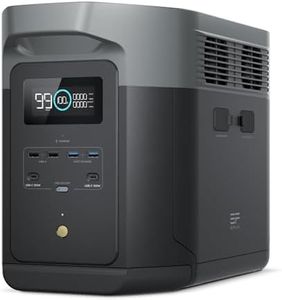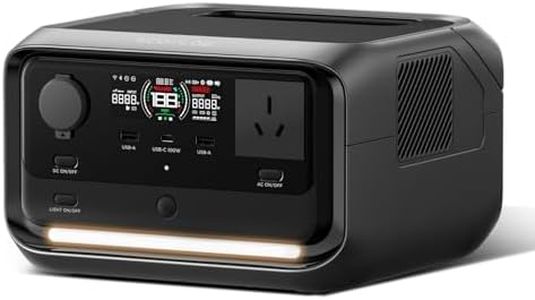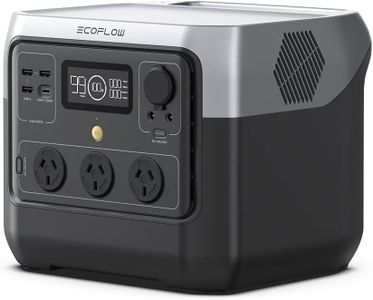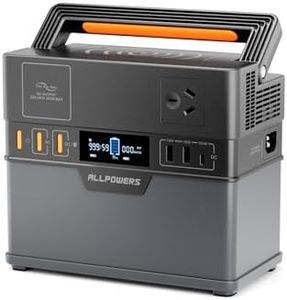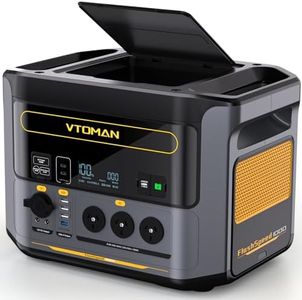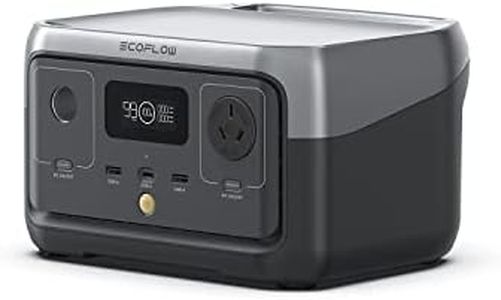We Use CookiesWe use cookies to enhance the security, performance,
functionality and for analytical and promotional activities. By continuing to browse this site you
are agreeing to our privacy policy
10 Best Camping Power Pack
From leading brands and best sellers available on the web.Buying Guide for the Best Camping Power Pack
Choosing a camping power pack can make your outdoor adventures a lot more comfortable by giving you access to electricity when you're far from outlets. The right power pack can charge essentials like phones, lights, cameras, and even small appliances. Since camping environments vary and everyone's needs are different, it's important to consider how much power you'll need, what type of devices you'll use, and how portable the power pack should be.Capacity (mAh or Wh)Capacity tells you how much energy the power pack can store, usually measured in milliampere-hours (mAh) or watt-hours (Wh). This is important because a higher capacity lets you charge your devices more times before the pack itself needs to be recharged. Smaller capacities (up to 10,000 mAh) are good for just phones or small devices for a day or two. Medium capacities (10,000 to 30,000 mAh) can handle multiple devices or a couple of days away. Large capacities (over 30,000 mAh or above 100 Wh) can even run small appliances and last through extended trips. Think about how many devices you need to charge, for how many days, and match that to the pack's capacity.
Output Ports and TypesThe number and type of output ports are crucial because they decide what devices you can charge and how quickly you can charge them. Common types include USB-A, USB-C, AC outlets, and DC car sockets. If you just need to charge phones or cameras, a few USB ports will do. For bigger gear like laptops, look for USB-C with Power Delivery or AC outlets. More ports mean more devices can be charged at once, which is ideal for groups or families. Decide what you need to charge, check the types of ports, and make sure there's enough variety and quantity.
Recharge OptionsSome power packs let you recharge them in different ways—by an electrical outlet, your car, or solar panels. This matters because camping often means limited access to electricity. If you'll be away from outlets for more than a couple of days, a power pack that can be recharged by solar or from your car keeps you powered up. Decide where you’ll most likely recharge, and choose a pack that supports those methods.
Weight and SizeWeight and size are about how portable your power pack is. Small, light models are easy to carry in a backpack and suit hikers or solo campers who want to keep things light. Medium-sized packs add more capacity without becoming too bulky, nice for car camping. Large packs are heavier and bulkier but great if you’re staying in one place and need to power several devices or small appliances. Match the weight and size to your camping style—ultra-portable for walking, bigger for car camping or group use.
Durability and Weather ResistanceDurability and weather resistance are vital for outdoor use. Some power packs have rugged cases, are water-resistant, or dustproof, which protects them against rain, drops, or dirt. If you’re camping in tough conditions or will be using the pack outside a lot, get one with some level of protection. If it’s mostly for inside a tent or car, a basic model should do.
Safety FeaturesSafety features like overcharge, short-circuit, or temperature protection keep your devices and the power pack itself safe. These features help prevent accidents or damage during charging. For peace of mind, especially when using sensitive devices or leaving the power pack charging while you’re away, look for models with built-in safety protections.
